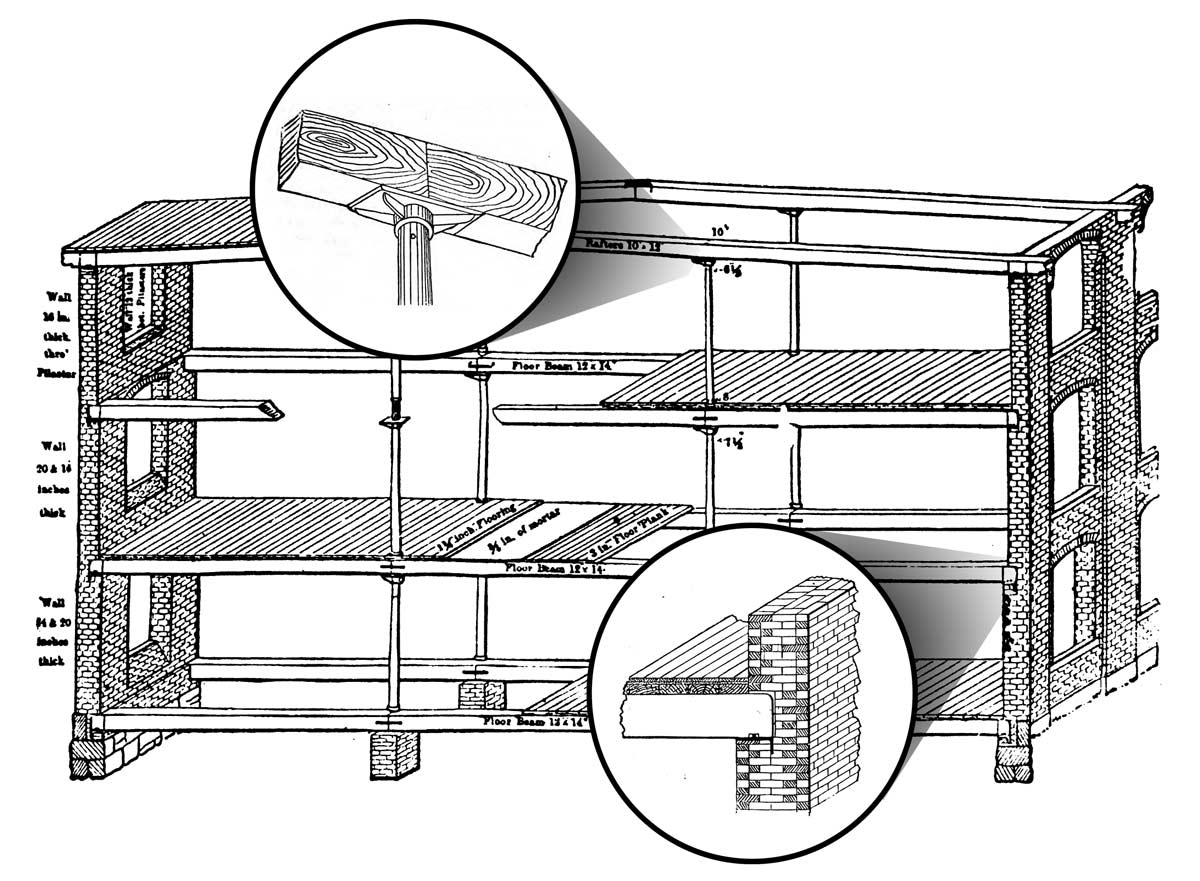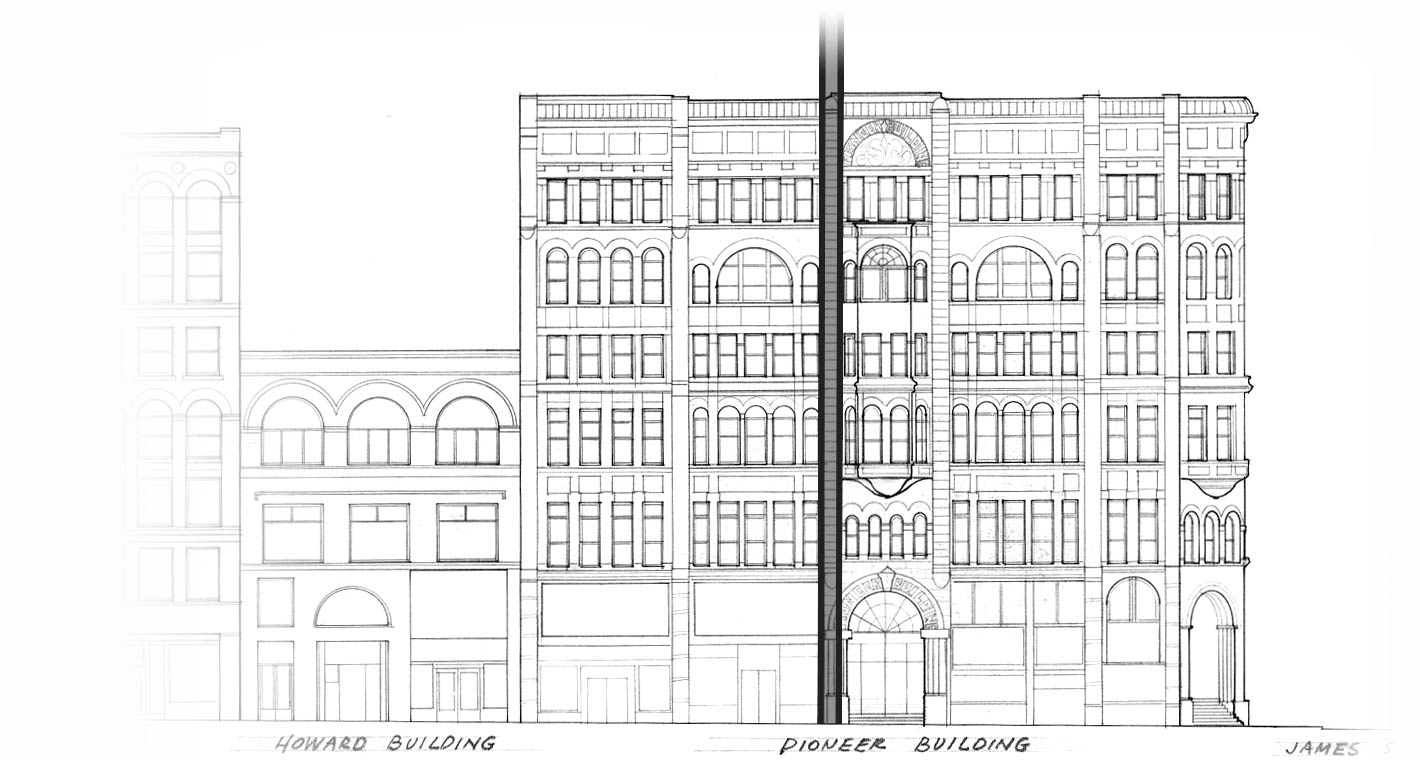The Fire’s Path
Tracking the path of destruction down Front Street
The main efforts to stop the blaze occurred as it spread south down Front Street (now First Street). Written accounts describe the growing realization of a major disaster as the fire approached the city core and buildings fell one after another.
The Fire Begins
2:40 p.m.
Steamer captains on the waterfront sound the alarm in response to smoke coming from the Pontius Block at Madison and Front. In the basement, a pot of glue has boiled over in Victor Clairmont's cabinet shop, igniting the wood shavings below. Carpenter John Back douses it with water — and the fire explodes. The entire basement is soon in flames.
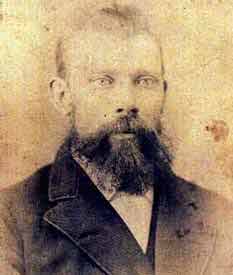
John Back, circa 1885
The Denny Block Burns
3:00 p.m. • 20 minutes since start
At first, the damage seems small — but when firemen pry up the wooden sidewalks, they discover that the fire is spreading through wooden walls in the basement. The Denny Block to the south is the second building to catch fire — containing the Dietz & Mayer Liquor Store, which explodes.
The Hydrants Fail
3:15 p.m. • 40 minutes since start
The fire spreads north to the Kenyon Block and west to the Commercial Mill. As Frye’s Opera House catches fire to the east, tragedy strikes — firemen connect to another hydrant, and the water pressure in all of the hoses falls considerably. Without sufficient water to fight the blaze, the possibility of a major disaster becomes clear.
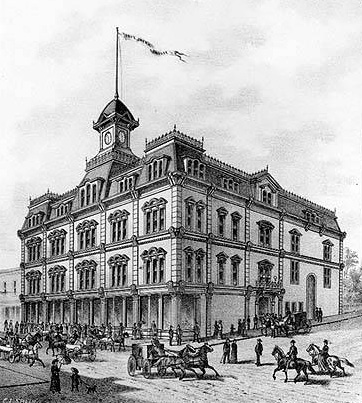
Frye's Opera House
The Fire Crosses Marion
3:30 p.m. • 1 hour since start
Propelled by strong winds from the north, the fire spreads further south. Firemen hope that the Reinig Building, a brick structure, will resist the fire; however, the fire from the opera house is hot enough that it soon ignites. On the west side of Front Street, the Colman Block burns.
Firemen Dynamite the Colman Block
4:00 p.m. • 1½ hours since start
Firemen place explosives under the Palace Restaurant in the Colman Block in an effort to demolish the building and block the fire’s path. They fail to destroy the building, however. On the east side of Front Street, the brick Kenney Block burns to the ground.
The Fire Crosses Columbia Street
4:30 p.m. • 2 hours since start
The fire reaches the core of the business district in just two hours. Firemen try to destroy the White Building and the San Francisco Store; both attempts fail. Debris from the collapsing Reining Building ignites the White Building. The San Francisco Store burns with all of its wares inside.
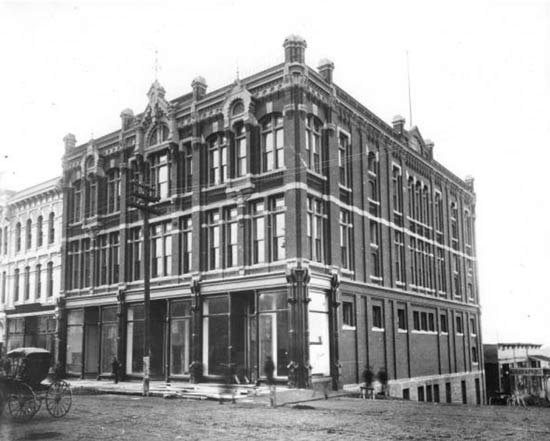
The San Francisco Store
The Bucket Brigade
5:00 p.m. • 2½ hours since start
In the north, on Front near University, 60-70 men form a bucket brigade to save the house of Jacob Levy. Bets are placed by onlookers, but the house survives.
Meanwhile, the Boston Block at Second and Columbia is doused with water from buckets and pans. It catches fire several times, but survives.
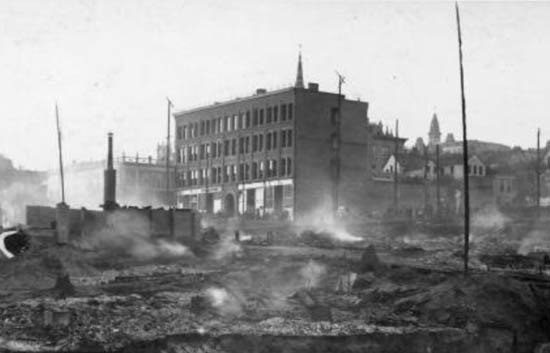
The Boston Block after the fire
The Fire Reaches Yesler
6:00 p.m. • 3½ hours since start
Sparks land on the roof of the magnificent Yesler-Leary Building, which erupts in flames. Thirty minutes later, the Occidental Hotel — the grandest in Seattle, believed to be fireproof — erupts in flames. By 7:00, the most expensive buildings in Seattle have been destroyed.
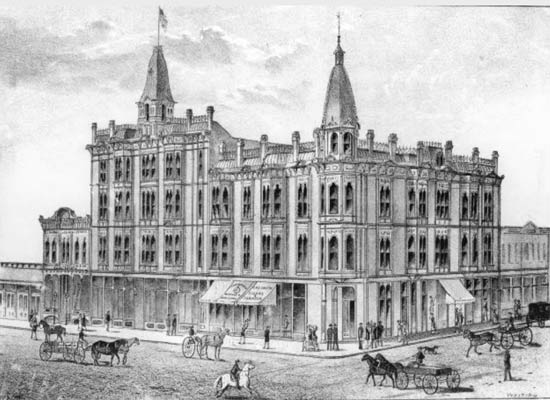
The Yesler-Leary Building in 1884
The Fire Reaches the Southern Waterfront
8:00 p.m. • 5½ hours since start
After burning the opulent brick structures north of Yesler, there is little hope for the rest of the business district. South of Yesler, the mostly wood frame buildings burn quickly, and with few exceptions, are destroyed. The fire burns itself out by morning.



